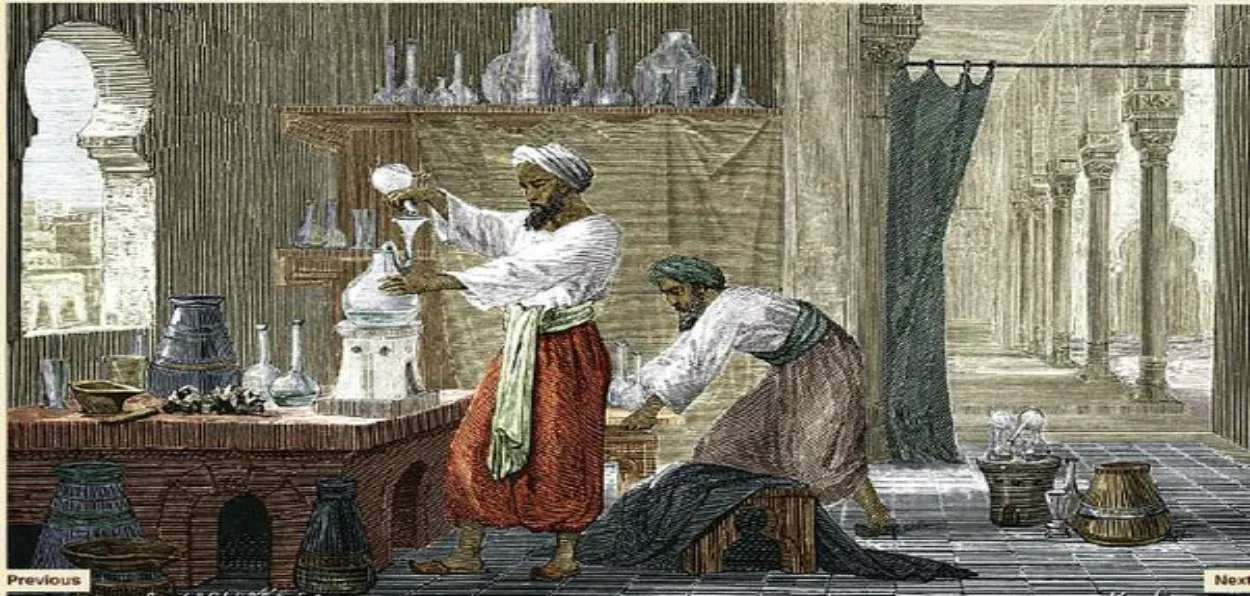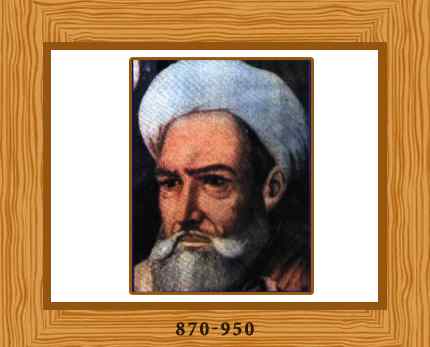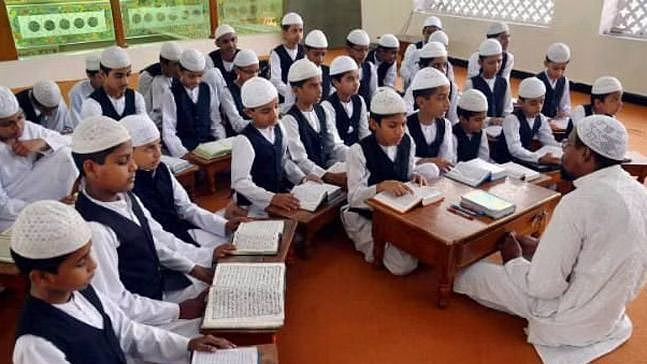
Not many know that Islam always elucidated the light of science from the early ages carving the pathway for European Renaissance and Enlightenment. As the Islamic scientific Renaissance started to emerge, many conservative Muslims rejected modern science as "corrupt foreign thought,” something alien, and impure, viewing it as incompatible with Islamic teachings. However, Islamic scientific tradition is discussed in accounts of Islamic civilization and broader histories of science, commonly attributed to the assimilation of ideas from various ancient civilizations, notably the Greeks.
During the Islamic Golden Age, scientists and inventors from Muslim cultures, such as Arabs, Persians, and Turks, likely surpassed their European counterparts by several centuries. Drawing inspiration from Aristotelian philosophy, Neo-Platonists, and notable figures like Euclid, Archimedes, and Ptolemy, these scholars made numerous groundbreaking discoveries. They extensively documented their findings in books covering diverse fields such as medicine, surgery, physics, chemistry, philosophy, astrology, geometry, etc.
Throughout the eighth to fifteenth centuries, Muslim mathematicians and astronomers were instrumental in building nearly every facet of mathematics. However, contemporary apprehensions exist regarding the insufficient scientific literacy observed in certain regions of the modern Muslim world.
In the twilight of the nineteenth century, the Muslim world saw an exponential rise of modern science, bringing in the blend of diverse philosophical waves intertwined with scientific principles, with new ideas such as Positivism and Darwinism. This transformative change impacted the perspectives of Muslim scientists and intellectuals, leaving a discernible mark on certain Islamic theological tenets.
 Scientist Alpharabias
Scientist Alpharabias
Key epochs in the growth and decline of Islamic sciences include the transformative age of ancient texts (Greek, Chinese, Indian, etc.) between the eighth and ninth centuries, followed by an era of original thinking and influences from the ninth to eleventh centuries. This was succeeded by a period of diminishing intellectual and systematic thoughts until the seventeenth century.
In the contemporary world, Islam is often perceived as a regressive religion. The richness of its past contributions to science remains suppressed. However, verses from the Quran and the vast body of scholarship produced during the Middle Ages always spotlight the power of knowledge and education. While Europe was in the grip of darkness, Muslims, inspired by the elegance of their teachings, assumed the role of torchbearers for scholarship and science. They safeguarded ancient knowledge, built upon it, and ultimately transmitted it to Europe. Understanding and appreciating the contributions of the early Muslims to Islamic civilization is crucial for contemporary Muslims.
Muslim school children are often deprived of knowledge about their prominent past, perpetuating an inferiority complex. Examining the mistakes of the past and drawing inspiration from exemplary figures can guide future endeavours.
In the 7th century A.D., the Prophet Muhammad was sent to the people of Arabia, and within a decade of his death, Muslims had conquered the entire Arabian Peninsula. Within a century, Islam had spread from Al-Hamrah in Spain to the borders of China, unifying science, theology, and philosophy. Allah in the Holy Quran and the Prophet Muhammad in the Sunnah commanded Muslims to study, seek knowledge, and learn from others' experiences. This directive inspired Muslims to excel in sciences, medicine, mathematics, astronomy, chemistry, philosophy, art, and architecture.
Muslim scholars began acquiring Greek works and translating them into Arabic a few centuries after the Hijrah. They meticulously studied, compiled, approved, and expanded upon Greek science and philosophy. This marked the onset of the Golden Age of Islam, lasting for over two centuries, during which many eminent scientists produced hundreds and thousands of books on various scientific disciplines.
Muslim scientists were the first to discover the laws of motion viewed as the backbone of modern civilization because the sciences of mobile machinery nowadays starting from cars, trains, planes, space rockets, and transatlantic rockets, among others, lean on these laws. They have aided man to invade outer space and to land on the surface of the moon.
The foundational laws for physical sciences, based on motion, underpin optics, sound, electricity, and more. While commonly attributed to Isaac Newton, contemporary physicists, including prominent math professors, found that Muslim scientists had discovered these laws centuries earlier. Newton essentially compiled and formulated existing knowledge into mathematical expressions. Muslim scientists' contributions, evident in manuscripts predating Newton by seven centuries, are widely acknowledged.
The Muslims also used camel convoys as transportable hospitals, which stimulated from place to place. Muslim scholars used human bodies to study anatomy and physiology to teach their students how the body functions allowing surgery to mature very quickly.
Abu Ali Ibn Sina (980-1037), better known to the West as Avicenna, was undeniably the greatest physician until the contemporary epoch. His renowned book, Al-Qanun fi al-Tibb, stayed a typical textbook even in Europe for over 700 years. Ibn Sina first described meningitis and made great contributions to anatomy, gynecology, and child health.
This interest in medicine goes back to the time of the Prophet Mohammad, who once said that “there is always a cure for every disease”. With this essence, there were hospitals and clinics built all over the Muslim world, the earliest built in 707 by Caliph Walid ibn Abd al-Malik in Damascus. Muslims were equipped with many developments such as the awareness of the flow of blood and separation and the establishment of the first apothecary shops and the earliest school of pharmacy. Muslim scientists, beyond practicing "Prophetic Medicine," delved into constant investigation and specialization, excelling in ophthalmology, surgery, hijama, gynecology, and more during the Abbasid era.
They not only corrected past mistakes but also conducted original research, contributing significantly to the development of medical knowledge. The Islamization of knowledge, as advocated by scholars like Muhammad Naqib Al-Attas and Ismail Raji Al-Faruqi, involves separating foreign elements, remoulding knowledge within an Islamic framework, and representing a comprehensive normative framework for individuals and society.
 Ibn Batuta
Ibn Batuta
Abu Bakr Muhammad ibn Zakariya al-Razi, also known as Rhazes (865-925 AD), stood as one of the foremost Muslim physicians, second perhaps only to Ibn Sina. Born in Ray, Iran, he studied under Hunayn ibn Ishaq and later Ali ibn Rabban. Rhazes authored over 200 books, including Kitab al-Mansuri and al-Hawi, a 20-volume medical compendium. In al-Hawi, he integrated Greek and Arab medical data, categorizing substances and emphasizing controlled nutrition for healing. He innovatively considered psychological factors' impact on health, tested therapies on animals, and was a skilled surgeon, pioneering the use of opium for anesthesia.
Following Rhazes, Abul Qasim al-Zahrawi (963-1013 AD), known as Albucasis, emerged as a renowned surgeon. Serving at the court of Caliph al-Hakam II, he attracted students and patients from both the Muslim world and Europe.Abu Nasr Al-Farabi (872 – 950) was known in the Latin West as Alpharabius, was an early Islamic philosopher and music theorist, also known as Alpharabius was an Arab scientist and philosopher, considered one of the preeminent thinkers of the medieval era.
Al-Battani (858 – 929) was one of the first astronomers to observe that the distance between the Earth and the Sun varies during the year. He was also called Albatenius, an Arab mathematician, scientist, and astronomer who improved existing values for the length of the year and of the seasons.
Ibn Battuta (1304 – 1369) known as Shams ad–Din was an Arab traveler and scholar who wrote one of the most famous travel books in history, The Rihlah.
Ibn Rushd (1126 – 1198) called Averroes. He was an Arab philosopher and scholar who produced a series of summaries and commentaries on most of Aristotle’s works and on Plato’s Republic.
Muhammad ibn Musa Al-Khwarizmi (780 – 850). He was known as Algoritmi or Algaurizin. His works introduced Hindu-Arabic numerals and the concepts of algebra into European mathematics.(People called him the father of algebra).
Omar Khayyam (1048 – 1131), was a polymath, known for his contributions to mathematics, astronomy, philosophy, and poetry, known as the Persian mathematician, astronomer, and poet, known for his scientific achievements and Rubaiyat (“quatrains”).
MadrasThabit ibn Qurra (826 – 901) was a polymath known for his work in mathematics, medicine, astronomy, and translations, an Arab mathematician, physician, and astronomer; who was the first reformer of the Ptolemaic system and the founder of statics.
Jabir Ibn Haiyan (722 – 804) was a Muslim polymath, philosopher, and alchemist. He was probably born in Tus. He was also called Geber and the father of Arab chemistry known for his highly influential works on alchemy and metallurgy.
Ibn Ishaq Al-Kindi (801 – 873) was a polymath active as a philosopher, mathematician, physician, and music theorist. He was also known as Alkindus and was a scientist, who is known as the first of the Muslim peripatetic philosophers.

Students in an indian madrasa
Ibn Zuhr (1091 – 1161), was a prominent physician of Muslim Spain. His famousbook Al-Taisir Fil-MudawatWal-Tadbeer translated into Hebrew and Latin is principally a manual of therapeutics, a “Book of Simplification Concerning Therapeutics and Diet”.
Ibn Khaldun (1332 – 1406) is the creator of the Muqaddimahibnekhaldun (His masterpiece on historiography), an introductory section to his historical masterpiece, that delves into the exploration of the science of society and civilization within it, presenting it as a prologue to the examination of history.
Ibn Al-Baitar (1197 – 1248)was an Andalusian Arab scientist, botanist, pharmacist, and physician. He was born in Malaga, Spain, and died in Damascus, Syria. He is considered one of the major scientists of Muslim
Looking at these scientists in Islam since the early times, it is evident that some negative mindsets transpired over time to lead to a situation where there was a struggle between science and religion where some Muslims are grappling with the old era and the new modern times. Many view most scientific progress with suspicion and they are carrying this fear to the younger generations calling it anti-Islamic.
Madrasas across India from Kargil to Kozhikode admit students as young as five years and they continue their studies till adulthood. Despite their omnipresence, they face a challenge in adapting their centuries-old system to modern times. The curriculum, established over 300 years ago by Mulla Nizamuddin Sihalvi in the beginning of the eighteen century, is the same except few Sunni Islamic Seminaries like Nadwatul Ulama Lucknow and Jamia Ashrafia Mubarakpur in district Azamgarh that have encompassed texts on Fiqh, Hadith, Tafsir, Falsafah, and ancient Arabic literature. Attempts at reform by scholars like Allama Shibli Nomani and Sir Syed Ahmad Khan have met resistance. In some places, they have introduced modern subjects like English and Mathematics, but overall, it’s given fact that the current syllabus is outdated, inadequate, and irrelevant to modern life.
It is imperative to note that major religious authorities generally disapprove of associating their faith with such beliefs. It's widely recognized that vaccination aligns with preserving health and fulfilling a communal duty, and, as such, is not deemed a violation of religious principles by most authorities.
The Quran and Islamic teachings provide ample room for interpretation in the realm of scientific inquiry. Scientists from the medieval Muslim civilization, such as Ibn al-Haytham, played pivotal roles in advancing scientific knowledge
There is an urgent need to encourage the madrasa communities to support the integration of scientific education alongside traditional Islamic religious studies. Science complements religious beliefs, as both ancient and modern texts guide humanity toward a better future. The Qur'an and the Prophet's teachings encourage scientific inquiry. Unfortunately, a large majority of Muslims have distanced themselves from science, labeling it as Western and anti-religious, while emphasizing that the West has embraced scientific thought, benefitting humanity globally through revolutionary inventions.
ALSO READ: History of Muslim women's empowerment through education
Muslim scholars not only preserved ancient knowledge but also made significant contributions, transforming it into advancements in fundamental science and technology. Their contributions spanned astronomy, chemistry, mathematics, philosophy, geography, and physics—laying the foundation for modern science and technology. Additionally, they facilitated global connectivity, disseminating knowledge and fostering links between the Arab world, the Far East, the Middle East, and European regions.
Madrasa communities now need to perceive science as not anti-religion, but as promoting peace, harmony, and prosperity.
Dr. Hafeez Ur Rahman, Author, Islamic Scholar, and Convenor of the Khusro Foundation, New Delhi
